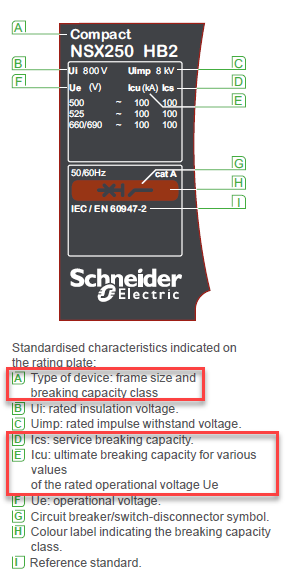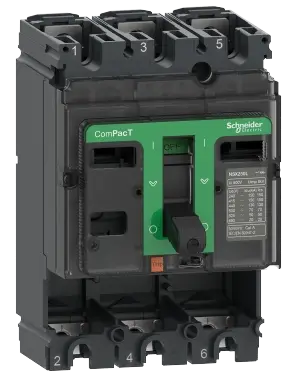Revit Guides
Data Management
Dictionary
IWE-S1-IWE- E8_Breaking Capacity of MCCB
What is Breaking Capacity (kA)
Breaking capacity, often referred to as short-circuit breaking capacity, is one of the most critical specifications of a protective device. Regardless whether its Fuse, Miniature Circuit Breaker (MCB) or Molded Case Circuit Breaker (MCCB). This rating determines the maximum fault current the device can safely interrupt without damaging itself or the system it protects.
Why does it matter?
A sudden surge in current—caused by a short circuit or earth fault, can damage electrical system, property or affect occupants. Protective devices are designed to swiftly open the circuit, stopping this destructive current and ensuring the safety of people, property, and the broader installation.
Measuring Breaking Capacity
Breaking capacity is typically expressed in kiloamperes (kA) at a specific voltage. For instance, an MCCB rated at 25 kA can reliably interrupt fault currents up to 25 kA.
Icu vs. Ics: Understanding the Ratings
- Ultimate Breaking Capacity (Icu): The absolute maximum fault current the MCCB can interrupt. However, the breaker may not be serviceable afterward.
- Service Breaking Capacity (Ics): A percentage of Icu, indicating the current level at which the MCCB can reliably function multiple times without losing operability.
Key Insight: Think of Icu as the “emergency limit” and Ics as the “everyday reliability level.”
Breaking Capacity Levels in Schneider’s Compact NSX Range

Different manufacturers use unique coding for breaking capacities. In the Schneider Compact NSX series:
- B: 25 kA
- N: 50 kA
- S: 100 kA
- L: 150 kA
- R: 200 kA
Where to Use Each Rating
- Lower Ratings (6 kA, 10 kA): typically used at final circuits.
- Lower Ratings (25 kA, 36 kA): suitable for distribution circuits with lower fault currents due to impedance and distance from the source.
-
Medium Ratings (50 kA): common in Main LV Switchboards, which handle higher fault currents.
-
Higher Ratings (70 kA, 100 kA, 150 kA): Typically used for main incoming feeders in industrial plants, data centers, or systems with large transformers.
-
Highest Rating (200 kA): For systems with heavy industrial equipment or large motors that generate high fault currents.
Key Considerations When Selecting an MCCB
-
Frame Size:
- The frame size corresponds to the device’s physical dimensions and maximum continuous current rating.
- Larger frames generally support higher breaking capacities. For example:
- 100–160 A breakers may share the same frame size.
- 250 A breakers will be larger, followed by 400 A and 630 A devices.

-
Trip Unit:
- The trip unit detects overloads and short circuits and triggers the breaker.
- Options include:
- Thermal-Magnetic Trip Units (TMD): Cost-effective and simple.
- Electronic Trip Units (ML): Offer more adjustability, better coordination, and improved flexibility.

-
Selectivity (Discrimination):
- Ensures that only the breaker closest to the fault trips, leaving the rest of the system operational.
- Proper selectivity requires a hierarchy of breakers with complementary breaking capacities and trip settings.
Compliance: BS EN60947-2 Standard
Each rating is suited for specific applications, from distribution boards to main feeders in industrial settings.
For some circuit-breakers, the Ics rating may be lower than the Icu rating (as low as 50%). For larger circuit-breakers the two ratings are often the same.
The standard, BS EN60947-2, recommends that any circuit-breaker should be selected and installed such that its Ics rating is equal to or greater than the maximum prospective fault current at the load end of the circuit in which it is installed. This is a recommendation not a requirement. Ics and its application, is not mentioned in BS 7671:2018 Amd 2. Where this recommended condition is not met, a warning message will be displayed.
Selecting the Right MCCB
Key factors to consider include:
- Frame Size and Trip Unit: Larger frame sizes often support higher breaking capacities. Electronic trip units provide greater flexibility and selectivity.
- Selectivity (Discrimination): Properly configured breakers ensure only the device closest to the fault trips, maintaining the system’s integrity.

